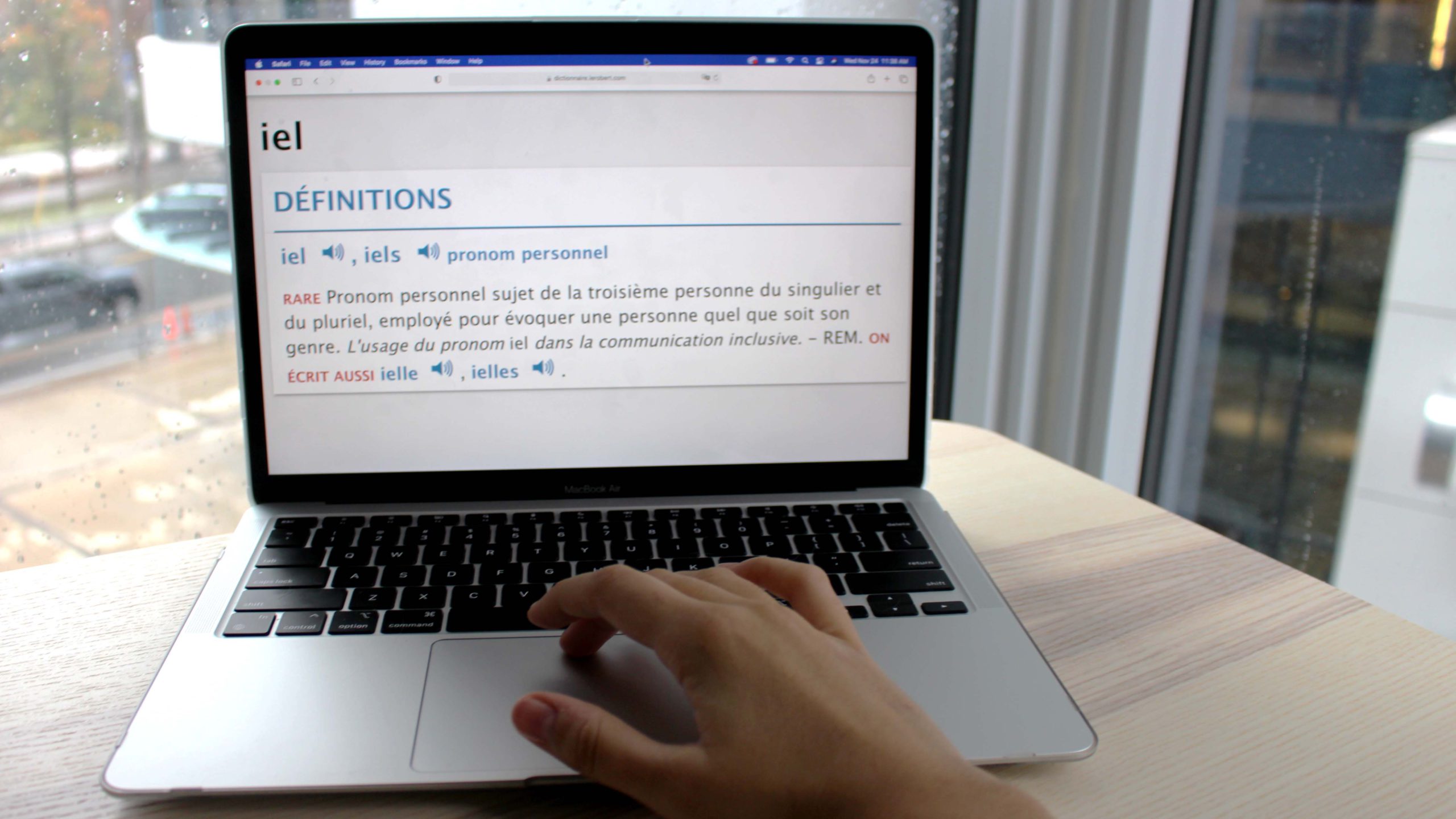French dictionary adds non-binary pronoun but educators still have questions
New term combines both feminine, masculine pronoun

caption
Le Petit Robert's online entry for a new gender-neutral pronoun, shown here in a photo illustration on Wednesday, has French-language educators in Nova Scotia looking for more guidance.A popular standard French dictionary has added the gender-neutral pronoun “iel” to its online definitions, but educators are stumped on how to use it.
Chantal White, a language and linguistics professor at the Université Sainte-Anne, said she welcomes the changes to Le Petit Robert but wishes the dictionary provided more context on how to use the non-binary pronouns.
“The dictionary is completely silent on all questions pertaining to grammar and conjugation,” she said in an interview in French. “And that’s a question that really arises for those who are trying to incorporate the use of the pronoun right now but are unsure how.”
The pronoun iel is a combination of the feminine pronoun elle and the masculine il. Le Petit Robert is the first official recognition of the gender-neutral pronoun iel, by a major French dictionary even though the pronoun has been in circulation for at least a decade.
“I find that this is quite remarkable because normally, dictionaries are behind in these types of movements, that is to say they wait a very, very long time before integrating new words. But here is an example where the dictionary finds itself somewhat at the forefront of the movement,” White said.
Le Petit Robert is a basic French language tool used by students and educators. The dictionary’s editors decided to include iel in its definitions to reflect its growing usage in the French language.
“Robert’s mission is to observe and report on the evolution of a changing, diverse French language,” Charles Bimbenet, director general of Le Petit Robert, said in October in a French news release.
According to White, incorporating gender neutral pronouns in the French language is a complicated task because of rigid masculine-feminine grammatical rules. Changing genders also forces changes in the rest of the sentence, but there is no way to accommodate a neutral gender.
“I think there are certain constraints in the French language that makes it easier to incorporate gender neutral pronouns in English, as there will be less repercussions. We can really intervene in a more surgical way on the pronouns in English, whereas it is more difficult to do so in French,” she said.
Karim Amedjkouh, the diversity and human rights co-ordinator for the Conseil Scolaire Acadien Provincial, has been waiting for non-binary pronouns to be officially recognized in order to make changes in classrooms.
The French school board has guidelines around children 12 and up being able to change first names in an unofficial context, but none concerning preferred pronouns. Given the lack of guidelines the school board has been unable to use non-binary pronouns in documentation.
Amedjkouh is hoping that the recognition of the pronoun iel in a major French dictionary will be enough to make significant changes in school procedures.
“I would like it to be used in report card comments for non-binary students. If it is in Le Petit Robert then why not be in our report cards?” he said in an interview in French.
White is also looking to make changes at Sainte-Anne, as the university has been taking longer in adapting inclusive language.
Some educational institutions are looking to include non-binary language, but questions remain on how it will be used.
“I think putting it in a dictionary is a first step. But I was a little disappointed that we are not given more information on its use, because then all we are doing is recognizing that the pronoun is in circulation,” White said.

